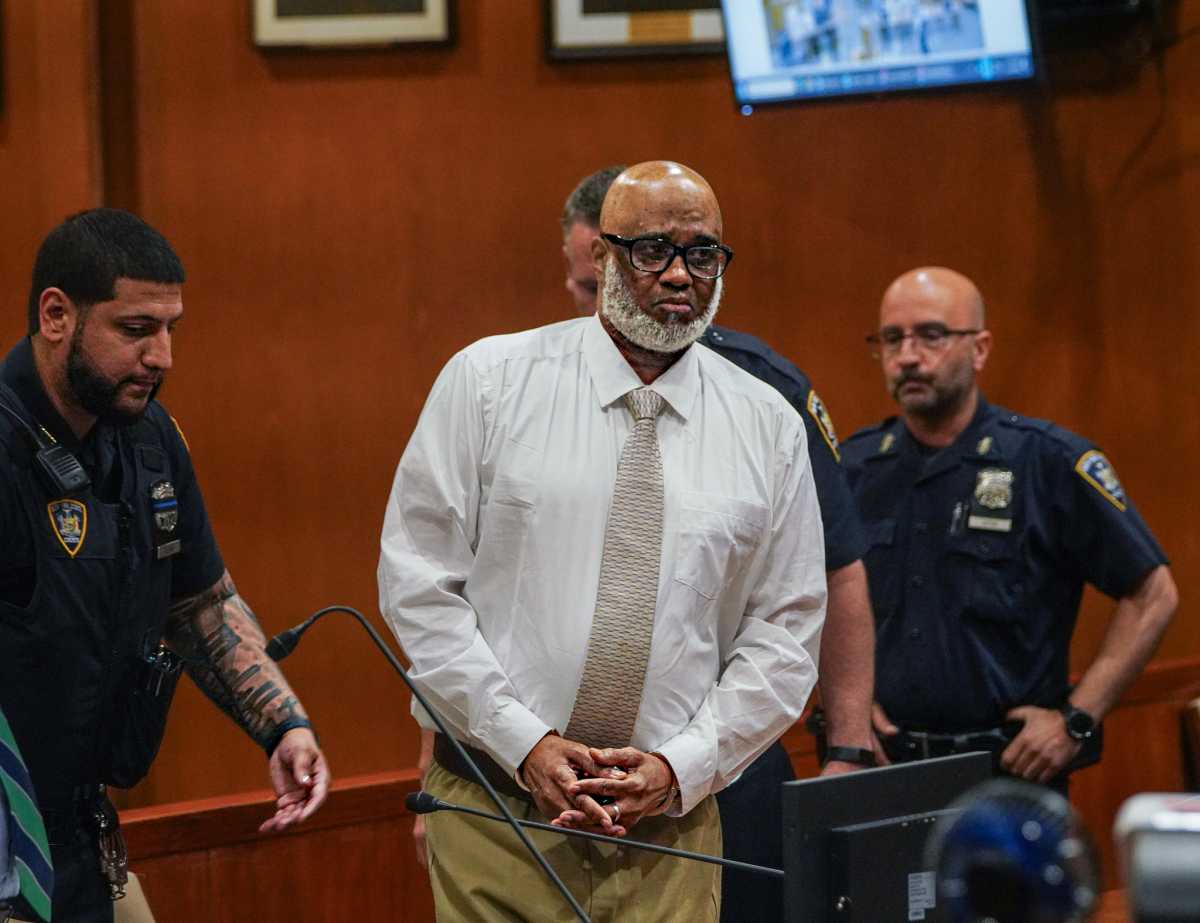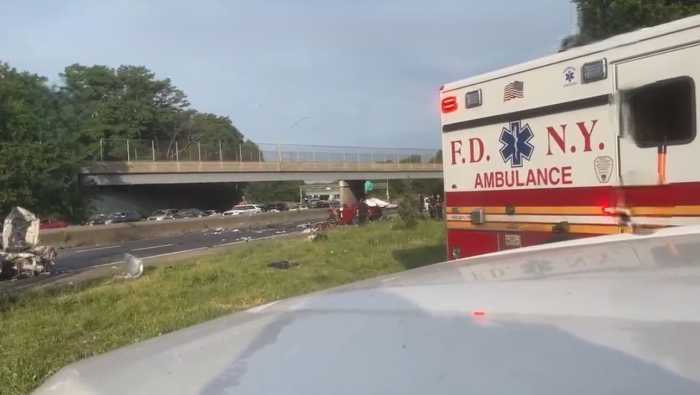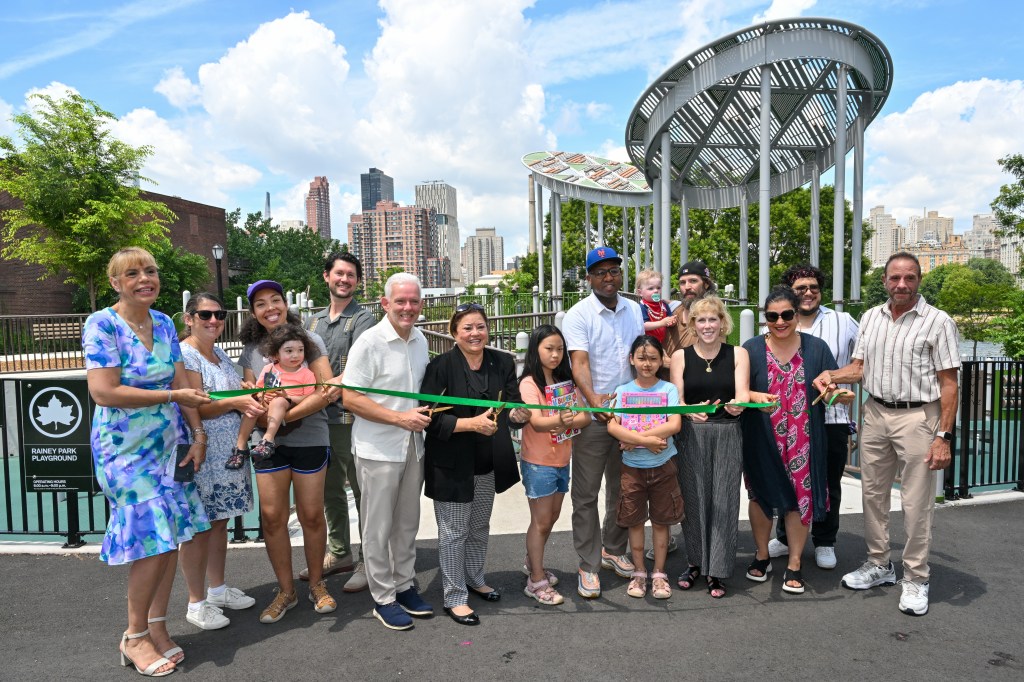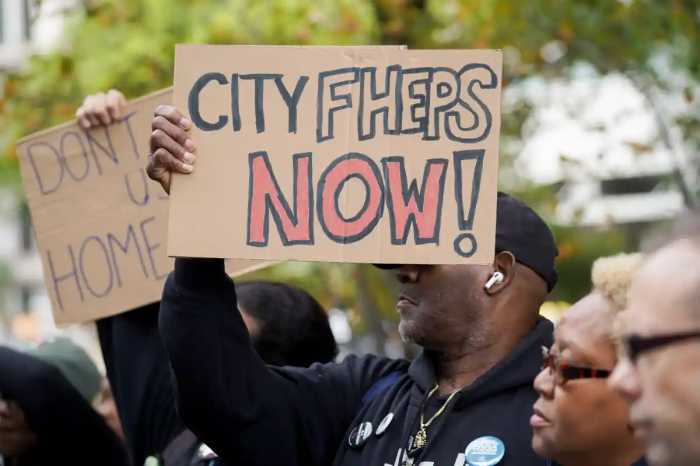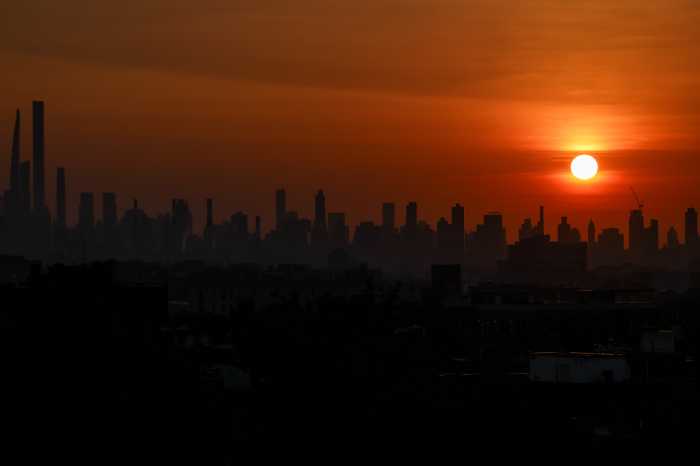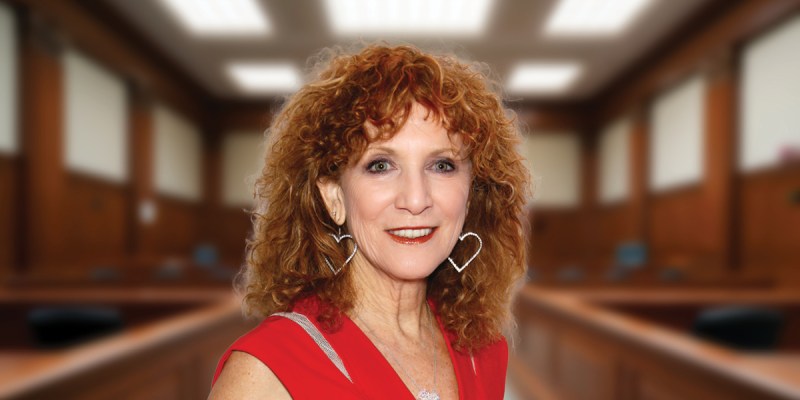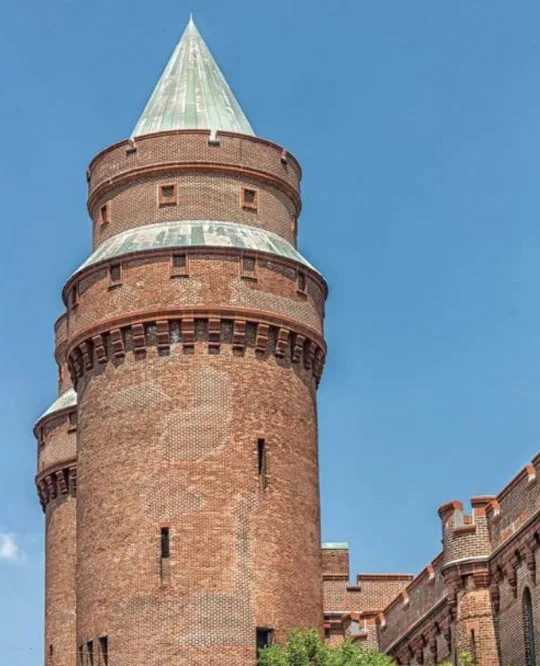By Dustin Brown
The Lower Manhattan Development Corporation turned an ear to Queens at a public meeting last Thursday, where borough residents who lost family Sept. 11 demanded a larger voice in the planning of a memorial at the World Trade Center site.
The 2-1/2-hour meeting, held in the main stage theater of LaGuardia Community College in Long Island City, drew heart-wrenching testimony from victims’ families along with creative memorial ideas from local artists and architects.
“This is a continuing conversation that LMDC and the Port Authority has been having with many individuals and groups in the community,” said Juanita Boyd Hardy, the meeting’s moderator. “Tonight is an opportunity to continue that conversation in Queens.”
The LMDC is the state-city corporation created to oversee the redevelopment of Lower Manhattan, and the scope of its task extends beyond the 16-acre World Trade Center site to include everything south of Houston Street.
The meeting was part of an outreach effort by the LMDC and the Port Authority of New York and New Jersey, the bistate agency that owns the World Trade Center site, to gather community input on plans for a memorial and key elements in the rebuilding.
Although the event drew fewer than 100 audience members, their statements were powerful and heartfelt.
“The blood of our loved ones is soaked into the ground,” said Patrick Cartier, an Astoria resident whose son James died Sept. 11. He insisted that the World Trade Center property rightfully belongs to the families of the victims. “If you didn’t lose anybody, you don’t understand what 9/11 is about.”
Although many people expressed scorn about a process which they said failed to consider their input, others simply made a claim for the kind of memorial they wanted to have.
Maureen Santora, whose son Christopher was a firefighter who died in the rescue efforts, asked that the memorial be “a quiet, reflective area where those of us who are emotionally connected can go.”
“It is not just another set of buildings,” said Santora, who lives in Astoria. “It is an extension of our loved ones.”
Others also recognized the need to capitalize on the new attention being paid to Lower Manhattan by advocating changes that could prove valuable in the city’s economic development.
F. Carlisle Towery, the president of the Greater Jamaica Development Corporation, suggested that a downtown transit hub be created to link Lower Manhattan with Jamaica via the Long Island Rail Road.
“A direct link to Lower Manhattan, as proposed, provides Jamaica with better access to labor from the west . . . and with new accessibility to the business activities and interchanges downtown and at Metrotech,” he said.
Towery was not the only one to tout the importance of development alongside remembrance.
“As we move forward, visionary urban planning is vital,” said Jennifer Hensley of the Downtown Alliance. “We must transform it into the first truly great urban center of the 21st century.”
But such suggestions were often difficult to hear for family members, who stressed the idea that much of the 16-acre site is a graveyard where their relatives’ unrecovered remains remain today.
Kathy Ashton, a member of the Family Advisory Committee from Woodside who lost her son, said not only the towers’ footprints but the entire area known as the “bathtub” should be saved from development, because many remains were found there.
She also criticized the memorial’s mission statement for failing to capture the true horror of Sept. 11.
“Yes, planes did crash into this building, but that’s not what killed my son and 2,800 other people,” she said. “Murderers did.”
A few people questioned the timeline that had been proposed, saying it made the LMDC’s promise to give a priority to the memorial appear disingenuous. Although final development plans for the site are anticipated in the spring, the memorial design is not expected until the following September.
A handful of people suggested that the memorial be built on a site separate from the 16 acres of the trade center.
William Gati, an architect from Kew Gardens, said the memorial should stand in the water and serve as “a universal symbol that is far greater than anything the world has seen.”
Although emotions often ran high, some left with a sense of optimism that the development corporation was sensitive to their feelings.
“I feel that all of you sitting up there are really listening,” said Maureen Santora, who added that she recognized the need for commercial development in addition to a memorial.
“The retail end of the site is the hope end,” Santora said. “Surrounding (the memorial) should be a hope that we are moving, that we will not succumb to terrorists, that we are ready to build again.”
Reach reporter Dustin Brown by e-mail at Timesledger@aol.com or call 229-0300, Ext. 154.

